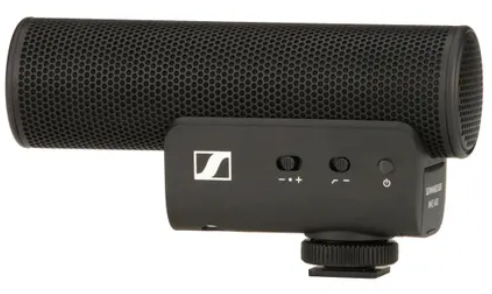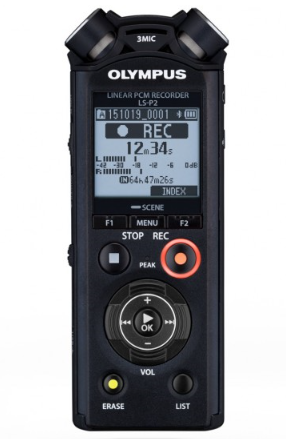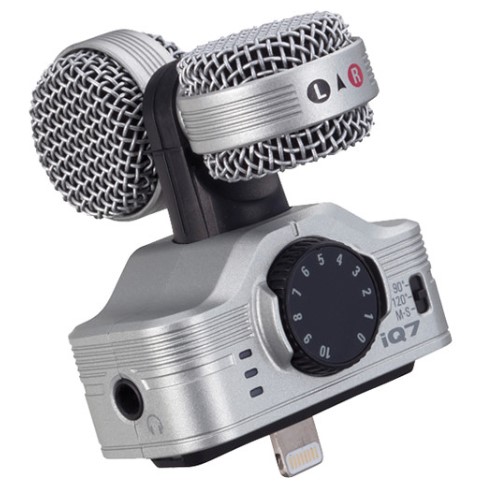Field Recording
Parabolic dish microphones (April 2023)
Telinga is the leading brand for kits with professional microphones and foldable parabolic dishes. They have many advantages and shield you from most ambient noise due to the narrow sound uptake. The price ($1099) will turn away some people and the bulkiness others. But if you are a sound recording nerd then this is it.
The more practical and economical choice for most would be a some type of directional microhone, or so called shotgun microphone. In the shotgun mic., off-axis sounds are attenuated relative to the on-axis sounds. I have used this type of microphone, a Røde VideoMic NTG with my Canon and Sony cameras, but most often directly into my Olympus LS-P4 recorder. I recently switched to the Sennheiser MKE-400 ($200) as it is easier to fit into my camera bag and it takes up less space with the furry windshield when on top of the camera. For those who mainly will be using it seperately (not with a Camera) then look for longer shotgun microphones like the Sennheiser MKE 600 ($330) coupled with a furry windshield and a shock mount handle. Or better yet, save up for the Parabolic dish + mic from Telinga.
Recorders
The Olympus LS-P4 records in highest broadcast quality 96 Khz/24 bit (PCM format). There is also a new Olympus LS-P5 that has improved bulit-in microphones but otherwise basically the same. Zoom H1n Handy Recorder is a good and cheaper alternativ albeit a bit larger and bulkier.
Both the Zoom and Olympus have built-in microphones. But if you want the best audio then you need to plug-in an external microphone, like the VideoMic NTG shotgun mic or the Telinga. Their playback speakers are very bad and cannot be used for much.
Starting out with field recordings
My recommendation! Before you dive in to the more advanced recorder such as Olympus LS-P4 and a shotgun microphone like the Røde VideoMic NTG, I would start with an external Zoom iOS/Android microphone. This will up the quality of the recordings from what you would get directly from the phones built-in microphone. These microphones allow you to select a more narrow sound uptake of 90° and a gain switch to increase the input of the faint birdsong. You can record with Voice Record Pro app or the dedicated Zoom HandyRecorder app on your phone for high-fidelity linear PCM format stored as uncompressed WAV-files. Unfortunately the Zoom app does not allow you to edit the name of the file so you need to upload them to for instance a SoundCloud account and rename them in that step instead. Note! turn on Airplane Mode when recording into a mobile phone.
Workflow & sound editing
Before you share your recordings you need to learn how to edit the tracks in the mobile app or better yet, download the sounds to your computer and use software such as Audacity, WavePad or purchase the excellent Adobe Audition. I use Adobe Audition for cutting out unwanted sounds like people talking and selecting only the best section of 2-5 minutes. You can even remove noise from the sound track if it is not interfering with the song/call. Note that it is best not to convert the WAV file to a compressed MP3 file as you loose details of the sound. Note that MP3 takes much less storage space so in some situations it can be useful. When the file is ready to be shared upload them to your private SoundCloud account, eBird and to Xeno-Canto (only your very best recordings). Make sure you note down a description of the sound (contact call, alarm call, flight call, breeding song, flight song), what equipment you used for the recording, the location, elevation, time and date.
Beginner guide
An old, but still nice A Beginner’s Guide to Recording Bird Vocalizations (Audubon.org).
The Proper Use of Playback in Birding
Sibley Guides has a good article on the proper use of playback. In short avoid loud and prolonged playbacks. Avoid using it to lure very rare birds in breeding season where also other birders could potentially playback and thus increase the likelyhood of a spoiled breeding. The Proper Use of Playback in Birding
Bluetooth Speakers For playback in the field I am very happy with the speaker popular among fieldguides JBL Clip 4



